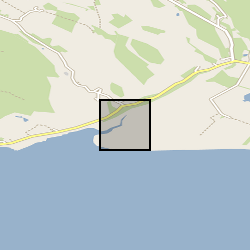Radioactive isotopes
Type of resources
Topics
Keywords
Contact for the resource
Provided by
Years
Formats
Update frequencies
-

Neodymium (Nd) concentrations, Nd radiogenic isotopes (143Nd/144Nd) and Nd stable isotopes (d146/144Nd) for chondritic meteorites, terrestrial basalts and mantle rocks, and rock reference materials.
-

The data comprises a multi-proxy dataset of 49 samples spanning approximately the time interval from 1.8-3.9 Ma according to the currently available shipboard age model from offshore the Limpopo River, southwest Indian Ocean. Data includes major and trace element chemistry and K-Ar ages from the clay fraction (<2um), radiogenic isotope geochemistry, stable isotopes of planktonic foraminifera Globigerinoides ruber. The data set is now online with a citable DOI, although with an embargo till September 2019, http://dx.doi.org/10.1594/IEDA/100719
-

Data collected as part of the NERC funded Radioactivity and the Environment (RATE), Long-lived Radionuclides in the Surface Environment (Lo-RISE), research consortium.This data comes from the terrestrial workstream group based at the University of Manchester. The data consists of radionuclide measurements of environmental and biological samples including uranium (238), thorium (232) and radium (226), and soil subsurface and surface biota bioprospecting (plants and AM fungi). The data from this first dataset has been published in the following publication: Davies et al. (2018) Multiple environmental factors influence 238U, 232Th and 226Ra bioaccumulation in arbuscular mycorrhizal-associated plants. Science of the Total Environment 640-641:921-934.
-

Data collected as part of the NERC funded Radioactivity and the Environment (RATE), Long-lived Radionuclides in the Surface Environment (Lo-RISE), research consortium.This data comes from the marine workstream group based at the Scottish Universities Environmental Research Centre (SUERC) and the Scottish Association for Marine Science (SAMS). The data consists of radionuclide measurements of environmental and biological samples including radiocarbon, caesium (137), americium (241) and plutonium (238, 239, 240).The data has been published in the following publications: Tierney et al., 2018. Modelling Marine Trophic Transfer of Radiocarbon (14C) from a Nuclear Facility. Ecosystem Modelling and Software 102, 138-154. Tierney et al., 2017. Nuclear Reprocessing-Related Radiocarbon (14C) Uptake into UK Marine Mammals. Marine Pollution Bulletin 124, 43-50. Muir et al., 2017. Ecosystem Uptake and Transfer of Sellafield-Derived Radiocarbon (14C). Part 1: The Irish Sea. Marine Pollution Bulletin 114, 792-804. Tierney et al., 2017. Ecosystem Uptake and Transfer of Sellafield-Derived Radiocarbon (14C). Part 2: The West of Scotland. Marine Pollution Bulletin 115, 57-66 Tierney et al., 2016. Accumulation of Sellafield-derived 14C in Irish Sea and West of Scotland Intertidal Shells and Sediments. Journal of Environmental Radioactivity 151, 321-327.
 NERC Data Catalogue Service
NERC Data Catalogue Service